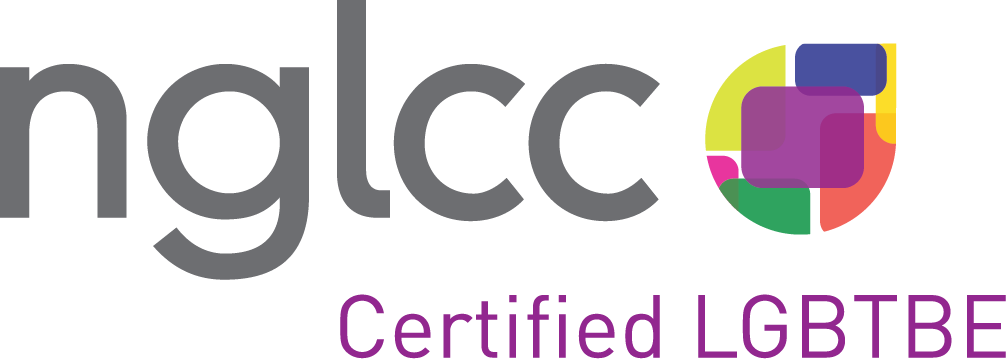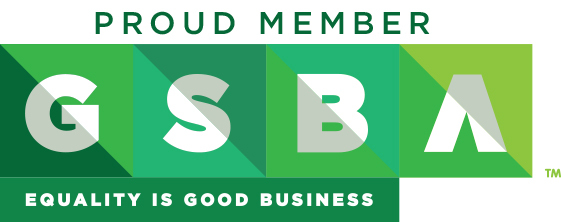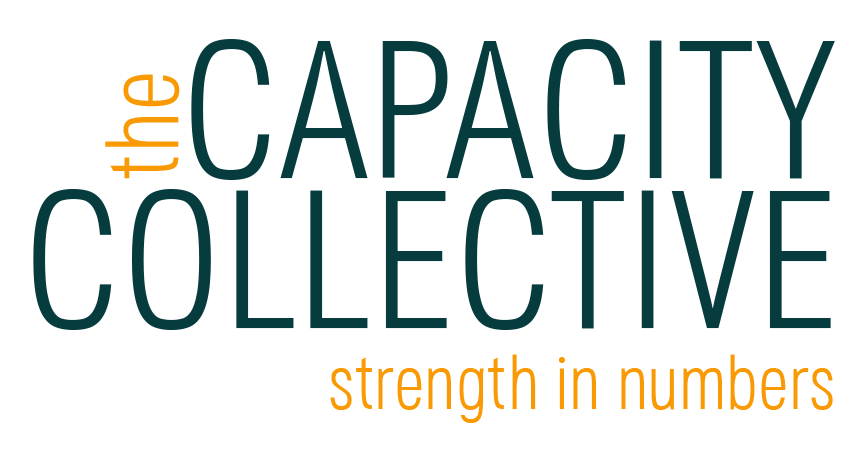emPower Tools
The Capacity Collective has developed a series of handouts on data-related tools, resources and processes. If you are a client of The Capacity Collective, we encourage you to use and share these resources within your organizations, and to other social service agencies in Washington, especially if they can be used to support groups who have traditionally not had access to these types of support, or forms of training.
The handouts are organized into our Data Readiness Domains. Click on the title of a handout to download as a PDF. We can also arrange a time to meet with your staff and provide training on these topics. Contact us to learn more!
Data Readiness Domains

Collect Meaningful Data
Goal: Data collection is thorough, efficient, and gathers data that is meaningful to clients and program.
Being Responsive to Community Norms
You may find that data collection approaches you have used successfully in one community are not working as well in another. This emPower Tool answers some questions we are often asked and provides tips on community and cultural norms so you can build trusting relationships with the communities you serve. Note: these tips should not be used to stereotype, but to think about how best to collect meaningful data with your communities. Download the emPowerTool here!
Special thank you to Araceli Efigenio for her work on this tool!
Beyond Numbers – Collecting Qualitative Data
Data are not just numbers (quantitative). They are also stories, articles, texts and images (qualitative). You and your staff work hard to write thorough comments and case notes. Those are data that can help you stay connected to your communities and make decisions for your program. Here are some of our favorite tips and tricks for getting the most out of your qualitative data, including several research methods that use different ways to tell the story (audio, video, photo). Download the emPower Tool.
Capturing Stories with Photovoice
Photovoice is a research method used to amplify the voices of communities who have been ignored or silenced. It allows individuals to tell their own stories, in their own way, by capturing photographs and/or video to show their lives through their own lenses. In this emPower Tool we share the basics of conducting a Photovoice project. Learn more at the Community Toolbox (ctb.ku.edu – Ch 3 Section 20).
Centering Anti-Racism in Your Data Practices
Anti-racism is important in data work because it can help identify systemic barriers of oppression both within and outside the organization, create a more comfortable and just work environment, and provide opportunities to dismantle racist structures out in the community. The fight for racial justice is lifelong. Below are some fundamental concepts and practices to consider when doing anti-racist data work. Also check out the Collect Meaningful Data: Decolonizing Your Data Practices and Being Responsive to Community Norms emPower Tools.
Download the emPower Tool here!
Special thank you to Araceli Efigenio for her work on this tool!
Centering Community in Your Data Practices
Purpose: You probably work at a community-based organization because you wanted to focus on community, not funders or models. Therefore, community should be at the center of your data processes. These are some favorite tips for honoring the communities you serve and their stories that are entrusted to you with your data practices. Download the emPower Tool here.
Centering Healing in Trauma-Informed Research
Trauma-informed care and data practices focus on understanding specific life experiences and their impact on wellness in order to better serve communities. Although the shift toward being compassionate about trauma is important, centering healing and resilience–rather than the trauma–is a meaningful way to give power back to the people receiving services. Here are some core concepts and data practices to start centering healing in your organization. Download the emPower Tool here!
Conducting Focus Groups to Collect Data Beyond Numbers
Purpose: Focus Groups are structured discussions, with a handful of participants, and one to two facilitators, to collect feedback or opinions. They are helpful for collecting data from clients and/or staff. Focus groups help you assess community needs through discussion and listening. As a form of qualitative data, focus groups allow you to collect data with depth, nuance, and variety. They allow you to observe nonverbal communication and group interactions when helpful. This emPower Tool covers the foundations of conducting focus groups. Download the emPower Tool here!
Conducting One-on-One Interviews
One-on-one interviews are a useful method for collecting qualitative (non-numeric) data (see the Beyond Numbers: Collecting Qualitative Data emPower Tool). After you conduct one-on-one interviews, you can analyze the recorded interviews and written interview notes using qualitative data analysis (see the Analyzing Qualitative Data emPower Tool). Download the emPower Tool here.
Special thank you to Mary Robertson for writing the content of this emPower Tool!
Data Quality – Excel Tips and Tricks
Data are crucial for making program decisions, reporting to funders, tracking emerging client issues and delivering high quality services. You want your data quality to be as high as possible so you can make decisions with confidence. In this tool, we share our favorite tips for using Excel to check data quality. The same concepts work for Google Sheets. For more details on what makes data high quality, and for tips and tricks on collecting high quality data, also see the Collect Meaningful Data: Data Quality Tips and Tools emPower Tool.
Data Quality Tips and Tools
Data can be frustrating, and data have not always been used in positive ways, especially for those of us from marginalized communities. Data can also feel limiting, especially when the focus is on numbers, which we know leaves out a lot of the story. The good news: data can be more than this! It can be empowering and help programs understand what is and isn’t working so staff can make decisions that better serve their clients. This is only possible, though, when the data are high quality: complete, consistent data. In this handout, we explore why data quality matters, and provide some tips and tricks for collecting high quality data. Download the emPower Tool.
Decolonizing Your Data Processes
No organization wants to accidentally hurt communities by reinforcing stereotypes that contribute to racism. Decolonizing data is about bringing real, tangible benefits to communities you’re serving through an ongoing process of learning and reflection. This emPower Tool provides a decolonization framework to consider when you develop or modify your data processes for Indigenous communities and beyond! Download the emPower Tool here!
Special thank you to Araceli Efigenio for her work on this tool!
Form Design Tips and Tricks
Forms are one of the most important data tools, because they shape the way the data is collected and prepared to for entry into the database. Forms are also an important tool for building trust with staff and the clients, as they are one of the first official documents clients will see from your organization/program. Forms can signal a lot about a program—including how organized and professional you are. Here are some of our favorite tips and tricks for using forms to collect high quality data and show trust and professionalism to staff and clients. Download the emPower Tool.
Honoring Disability in Your Community-Centered Data Practices
Purpose: 1 in 4 adults in the United States are disabled. A portion of your clients and staff—whether they have notified you or not—have a visible or invisible disability or impairment. Ensuring your spaces and programs are accessible to people of all abilities is a crucial aspect of an inclusive program and workplace. Additionally, your program or organization may value measuring how people identify with disabilities, or what barriers they are facing in accessing services and resources. In this emPower Tool we discuss ways of thinking about disability, making your spaces and services accessible, and considerations for when and how you may want to collect data on disabilities. Download the emPower Tool here!
Incorporating Culturally-Responsive Data Practices
Many of our systems in North America are designed by and for white people. Because foundations and government agencies are part of those systems, based in white cultural norms, many of the processes and available tools for community-based organizations are biased toward those norms. That may include the screenings and assessments funders ask us to use, our data collection processes, and how we use the data we collect. Using the same tools and processes for all of our clients and ignoring diversity in culture and lived experience, will mean our data
is not actually representative of the communities we serve. Here are a few of our best practices for ensuring your data processes are culturally responsive.
Download the emPower Tool here.
Look at Your Data in a New Way: Conducting a Data Review
Purpose: A Data Review is intended to help you take a step back and think through the data you are collecting. Are there any adjustments you may want to make to ensure you have the most useful and meaningful data possible? Below are some steps to help guide you through the data review process, including creating a data map and creating data stories. Download the emPower Tool!
Survey Design Basics
Surveys are a fairly quick, cheap and easy way to get information from people. You can do surveys to assess community needs, test the success of a program, request input from staff, or gather feedback from clients after participating in a program or event. The simplicity is deceiving; surveys need to be done well for the data to give you good information. Here are some things to consider. Download the emPower Tool.
Tracking Client Stories Over Time
Stories are powerful because when they are told effectively, we tend to respond to them in more meaningful ways than we do to facts or figures. Your work has real impacts on the communities that you serve. The stories of your clients’ perseverance, hope, and success can and should be shared with a wider audience. In this emPower Tool, we will discuss the types of stories, and the methods you can use to collect and tell your clients’ stories. Download the emPower Tool.
Special thank you to Dr. Joice Chang for her work on this tool!
Using True Storytelling as Data
Purpose: Storytelling–like focus groups, 1-on-1 interviews, photo voice and case notes–is another method for collecting qualitative data (see the Beyond Numbers: Collecting Qualitative Data emPower Tool). Written or recorded stories can be analyzed for themes using qualitative data analysis (see the Analyzing Qualitative Data emPower Tool) or used as testimonials and oral histories for fundraising, grant applications, decision making, advocacy and more (see p. 2). Download the emPower Tool here.
Special thank you to Mary Robertson for writing the content of this emPower Tool!
Store + Track Your Data
Goal: Having a data system that allows for centralized data storage that is secure and easy for data entry, reporting and management.
Choosing a Database – What to Consider
The right database can take your work to the next level. Rather than working off of spreadsheets, which are two dimensional (rows and columns), you can start to look at the depth of your data, showing connections between data points. In a database you can connect a child to a parent, and/or a full household. If the family moves, you only need to change the address in one place. Using a database helps you to more easily make the connections you need for reporting; monthly and annual counts become a breeze, and you can disaggregate (slice your data) to get deeper into your stories (for example, comparing single vs. two parent households, or watching a child’s ASQ scores over time). Download our guide here.
Data Confidentiality for Nonprofits
This tool can help support non-profits in data protection planning. With expanding risks and regulations, data security is important to:
• Keep clients’ personal information confidential.
• Maintain trust in relationships you have with clients, employees and donors.
• Make sure you are in legal compliance so your good work can continue!
• Develop mechanisms for data confidentiality that still are user friendly for non-profit employees
Introduction to Airtable and Integrations
There are many online programs that can help you manage your data more effectively. The problem is, there is an overwhelming number of these programs, and it can be a There are many online programs that can help you manage your data more effectively. The problem is, there is an overwhelming number of these programs, and it can be a little intimidating to sort through what seems like an endless number of options. Airtable is a great tool because unlike many other options, its free version has a lot of functionalities that can be useful for your work. This emPower Tool will provide an overview of what Airtable is and how you can make the most of its free version. Download the emPower Tool here!
G Suite vs. Microsoft 365
There are many tools to help you collaborate with your team, but who has time to figure out the best options? In this emPower Tool, we compare two of the most common collaboration tools for nonprofits: Google’s G Suite for Nonprofits, and Microsoft 365 for Nonprofits. Below, find the basics about each so you can make an informed decision. Each offers a suite of applications to help you create and share with your team, and both have discounts specifically for nonprofit organizations. Download the emPower Tool.
Understand + Analyze Data
Goal: Program staff are able to analyze and understand a wide variety of data in various formats.
Analyzing Qualitative Data – Tips and Tools
It is an opportunity to capture some of life’s complexities and nuances and allows us to make meaning of our data. The data becomes richer this way, but the analysis can also be more challenging and time-consuming. Here are some of our favorite tips for getting started with your qualitative data analysis. Download the emPower Tool.
Conducting a Root Cause Analysis
We get so wrapped up in our programs and getting through all our work that we rarely get to take a step back and really reflect on, a) the impacts we are having, and, b) our approaches to the changes we want to see in our communities. Root Cause Analysis (RCA) is a method for systematically uncovering root causes behind the issues that the communities we serve are facing. This analysis helps us make programmatic decisions, apply for funding, and evaluate programs based on root causes—not just the symptoms. Download the emPower Tool here.
Using Public Data for Context and Comparison
Your stories—the impacts you are making, and the ways you are supporting your communities—have even more power when they are given context. You have a great breastfeeding rate—but how do you demonstrate how great it is to the community, or to funders? Use public data to compare your outcomes to state or national averages. You hear from clients they can no longer afford to live in their neighborhoods, and you need to expand your service area. How can you demonstrate this need to funders? Look to public data for patterns of gentrification in the neighborhoods you serve. In this emPower Tool, we discuss using Public Data to a) give context to your stories, and b) keep your org informed of trends impacting your communities, locally and beyond. Download the emPower Tool.
Special thank you to Dr. Joice Chang for her work on this tool!
Have a Strong Data Culture
Goal: Program staff at all levels are highly engaged with data processes and decision making.
Building Teams for Decision Making and Change
None of us can do it all alone. We need the right voices at the table when we make program decisions, and we can accomplish more—in more systemic ways—when we are able to leverage the perspectives and networks of a team. This emPower Tool has some of our favorite suggestions for building a team that can help you make programmatic decisions and systemic changes to your programs. Also see the Using Data for Decision Making and Improvements emPower Tool. Thank you to the National Implementation Research Network (NIRN) for contents in this Tool!
Conducting a Process Review (including Data Processes)
This document is intended to help organizations review processes to identify opportunities for process improvement. Many concepts reflected here have been taken from the Lean Management System. This is just an overview and introduction to help get the process started! Download the emPower Tool.
Conducting a Process Review – Worksheet
The first step to improving a process is to Define and Document a sticky or painful process step-by-step. Use the Conduct a Process Review Tool for an overview, the Define and Document Processes Tool for specifics about standardizing a process. This Tool is the Process Review Worksheet to use as you Define and Document.
Creating Data Feedback Loops with Community and Staff
Data is supposed to be a reflection of real lives and experiences and is therefore dynamic. Data should be shared out with your Board of Directors, development, legislators, community partners and so forth. It should also be shared with two other very important audiences: your clients (it is, after all, their stories you are collecting) and the staff who are collecting and inputting the data. Sharing the data with clients and staff and soliciting their input/feedback on your data processes and findings shows your clients that you honor their stories and shows your staff how they are making a difference, which is a great motivator. It also shows both audiences they are part of something bigger, which is great for keeping community and staff invested in your programs. This process of regularly sharing data with clients and staff, and soliciting their input, is what we call Feedback Loops.
Defining and Documenting Processes (including Data Processes)
The first step to improving a process is to define and document the process. This is best done with the team, so everyone can share how they complete a process, and to get team buy in. These defined processes will then serve as a baseline from which to improve those processes. In this tool, we provide the steps for defining and document a process you would like to improve. Download the emPower Tool.
Engaging Your Staff In Data Quality
Your staff are a crucial part of your program and its success. They are also core to the quality of your data. As you know, staff turnover impacts your ability to keep clients, and training new staff takes a lot of time and money, so it is important to retain staff. These are some of our favorite tips for creating a culture where staff are actively involved and understand the power of high-quality data. Download the emPower Tool.
Finding Your Flow – 8 Opportunities to Improve Processes (Including Data)
A tool adapted from the Lean Management System to help you make the best of your time. Download the emPower Tool.
Making Achievable Goals
Goals are easy to make, harder to accomplish. Time can be a factor, but our ability to use time well is connected to our priorities. We are more likely to accomplish our goals when we are invested—when the goals have meaning for us. We find meaning in something when it connects to our core values— WHY we do what we do. It is also easier to accomplish goals when we break them down into concrete tasks—achievable, bite-sized pieces of the bigger picture. In this emPower Tool, we share strategies to set yourself up for success in your personal and program goals. Download the emPower Tool.
Managing Your Time – Tips and Tricks
It can feel overwhelming to manage a million priorities and keep up our job workload. You want to get organized, but who has the time to think it all through? In this emPower Tool we have some of our favorite tips and tricks for increasing productivity and streamlining your work processes to have more time to get work done, and less time feeling overwhelmed. Download the emPower Tool.
Organizing Electronic Work Spaces
Our electronic work spaces (files and folders) quickly become unwieldy when we have multiple copies of the same documents, or when everyone has their own way of labeling and storing files. This document is intended to provide tips to organize electronic work spaces so it is easier to quickly find what you are looking for, know which version of a document to use, and keep your workflow going. Download the emPower Tool.
Organizing Physical Work Spaces with the 5S System
Sort, Straighten, Sweep, Standardize and Sustain. This tool is adapted from the Lean Management System to help you organize your physical work spaces, with a column for taking notes. Download the emPower Tool.
What About Staff? Including Staff Voices for Program Improvement
Purpose: Staff are key to program effectiveness. Through relationships, staff are on the front line for observing and understanding what is going on with families and communities and seeing the direct and indirect impacts of programs. Still, many programs do not have systematic ways of collecting and using staff suggestions to improve programs. Staff input can also support evaluating organizational values, program goals, and staff satisfaction for attracting and retaining the best staff. These are some of our favorite ideas for incorporating staff voices into your programs and organizations. Download the emPower Tool.
See also: Create a Data Culture: Engaging Your Staff and Collect Meaningful Data: Survey Design Basics emPower Tools.
Working in Teams – Communication Tips and Tools
You are busy, and every day can feel like information overload. Here are some of our favorite tips & tricks for streamlining communication, so you can spend less time searching through old emails, and more time doing the awesome work of your program. Download the emPower Tool.
Working in Teams – Collaboration Tips and Tools
You know you want and need to get input from staff, and want to be able to work together on projects…but how? Instead of sending a confusing number of versions of a document back and forth, losing track of which one is the “final” vs “final final” document, check out some of our favorite best practices for collaborating, and our favorite FREE tools. Download this emPower Tool.
Use Your Data For Good
Goal: Program has access to data and skills they need to be able to use their data for decision making and social change.
NONPROFIT ADVOCACY: Nonprofit Advocacy Overview
Your work creates positive change for people in the community you serve. You can have an even bigger impact by bringing social change through advocacy. Advocacy means “speaking up with” the people you serve and the issues that are important to their well-being. You can advocate by sharing evidence-based solutions with the community and people who create policy (policymakers). Download the emPower Tool, or check out these emPower tools for additional advocacy support: Levels of Nonprofit Advocacy in Washington State, Using Data in Advocacy, and Policy Basics for Nonprofits.
NONPROFIT ADVOCACY: Levels of Nonprofit Advocacy in Washington State
Across different levels of government, your organization’s data can help decision-makers make the right policy choices for your communities. Learn how to participate in city, county, and state level advocacy from legislative meetings to delivering a compelling testimony in front of lawmakers. Download the emPower tool, or check out these emPower tools for additional advocacy support: Nonprofit Advocacy Overview, Using Data in Advocacy, and Policy Basics for Nonprofits.
NONPROFIT ADVOCACY: Policy Basics for Nonprofits
Nonprofit advocacy often involves following legislation that affects your programs, funding, and the communities you serve. Nonprofits can have a powerful voice in the legislative process and effecting systemic change. This emPower tool gives you a brief introduction to the basics of finding and tracking legislation, how to understand bills, and how to participate in the legislative process. Download the emPower tool, or check out these emPower tools for additional advocacy support: Nonprofit Advocacy Overview, Levels of Nonprofit Advocacy in Washington State, and Using Data for Advocacy.
NONPROFIT ADVOCACY: Using Data in Advocacy
Your data can strengthen your advocacy. Identify which type of advocacy you are pursuing, then follow three steps to integrate data into your process. Download the emPower tool, or check out these emPower tools for additional advocacy support: Nonprofit Advocacy Overview, Policy Basics for Nonprofits, and Levels of Nonprofit Advocacy in Washington State.
Using Data for Decision Making and Improvements
It is easy to get so wrapped up in the daily grind that you lose sight of the big picture. How do you know you are accomplishing what you set out to do as a program? How do you know if your program is working, and working the same for all of your clients? How do you know if you are keeping up with the evolving needs of the communities you serve? You collect data for funders; what about collecting data for yourself, and using that data to make program improvements? In this tool we share tips for using data for decision making, including Continuous Quality Improvement, so you can make data-driven decisions to better serve your communities. Thank you to the National Implementation Research Network (NIRN) for the contents of this emPower Tool!
Using Data for Grant Writing
Grant writing is one of the most dreaded parts of working at a non-profit. It’s tedious, time consuming, and asks a lot of folks who are already overworked and underpaid. In this emPower Tool, we share a few best practices for using data (both qualitative and quantitative) in grant applications. Using data to highlight your program needs and demonstrate services gaps will strengthen your application and make you more competitive for funding. Download the emPower Tool here!
Communicate Your Stories
Goal: Program has access to the data and skills they need to demonstrate their impact to diverse audiences.
Creating Data Feedback Loops with Community and Staff
Data is supposed to be a reflection of real lives and experiences and is therefore dynamic. Data should be shared out with your Board of Directors, development, legislators, community partners and so forth. It should also be shared with two other very important audiences: your clients (it is, after all, their stories you are collecting) and the staff who are collecting and inputting the data. Sharing the data with clients and staff and soliciting their input/feedback on your data processes and findings shows your clients that you honor their stories and shows your staff how they are making a difference, which is a great motivator. It also shows both audiences they are part of something bigger, which is great for keeping community and staff invested in your programs. This process of regularly sharing data with clients and staff, and soliciting their input, is what we call Feedback Loops.
Data Visualization – Excel Tips and Tricks (coming soon)
Under construction – check back soon!
Data Visualization Tips and Tools (coming soon)
Under construction – check back soon!
Turning Data into Dashboards
Data are ideally used for making program decisions, tracking emerging client issues, and delivering high quality services. However, staff often find themselves collecting information, entering it into databases, and then using this data only to provide funders with the numbers they require. If you want to change that – if you want to see and use data for the purposes of your own work – dashboards may be for you. This handout will support you in developing processes to turn the data you collect into dashboards that visually summarize the stories of your program into accessible, compelling reports customized to your various audiences. Download the emPower Tool here!




